SAINT JOHN PAUL II


INTRODUCTION


Pope John Paul II was the head of the Catholic Church and sovereign of the Vatican City State from 1978 until his death in 2005. He was elected pope by the second papal conclave of 1978, which was called after John Paul I, who had been elected in August to succeed Pope Paul VI, died after 33 days. Cardinal Wojtyła was elected on the third day of the conclave and adopted the name of his predecessor in tribute to him. Born in Poland, John Paul II was the first non-Italian pope since Adrian VI in the 16th century and the second-longest-serving pope after Pius IX in modern history.
"DO NOT BE SATISFIED
WITH MEDIOCRITY.”
He was one of the most traveled world leaders in history, visiting 129 countries during his pontificate. As part of his special emphasis on the universal call to holiness, he beatified 1,340 and canonised 483 people, more than the combined tally of his predecessors during the preceding five centuries. By the time of his
death, he had named most of the College of Cardinals, consecrated or co-consecrated many of the world's bishops, and ordained many priests. He has also been credited with helping to end Communist rule in his native Poland as well as the rest of Europe.




EARLY
LIFE



Karol Józef Wojtyła was born on May 18, 1920, in Wadowice, Poland, the youngest of three children. Although he was born into a loving family, his early life was marked by suffering and loss. His older sister, Olga, died in infancy and, by the time Karol was twelve, his mother Emelia had died of kidney failure and his older brother, Edmund, had died heroically serving those stricken
with scarlet fever. Known to his friends as Lolek, and growing under the loving guidance of his father, he was a vibrant youth, athletic, studious and a gifted theatrical performer. In mid-1938, Wojtyła and his father left Wadowice and moved to Kraków, where he enrolled at the Jagiellonian University. While studying such topics as philology
and various languages, he worked as a volunteer librarian and though required to participate in compulsory military training in the Academic Legion, he refused to fire a weapon. He performed with various theatrical groups and worked as a playwright. During this time, his talent for language blossomed, and he learned as many as 15 languages — Polish, Latin, Italian,
English, Spanish, Portuguese, French, German, Luxembourgish, Dutch, Ukrainian, Serbo-Croatian, Czech, Slovak and Esperanto, nine of which he used extensively as pope.


In February 1940, he met Jan Tyranowski who introduced him to the Carmelite spirituality and the "Living Rosary" youth groups. In that same year he had two major accidents, suffering a fractured skull after being struck by a tram and sustaining injuries which left him with one shoulder higher than the other and a permanent stoop after being hit by a lorry in a quarry. His father, a former Austro-Hungarian non-commissioned officer and later officer in the Polish Army, died of a heart attack in 1941, leaving Wojtyła as the immediate family's only surviving member. "I was not at my mother's death, I was not at my brother's death, I was not at my father's death," he said, reflecting on these times of his life,
nearly forty years later, "At twenty, I had already lost all the people I loved."
After his father's death, he started thinking seriously about the priesthood. In October 1942, while the war continued, he knocked on the door of the Archbishop's residence in Kraków and asked to study for the priesthood.
PRIESTHOOD
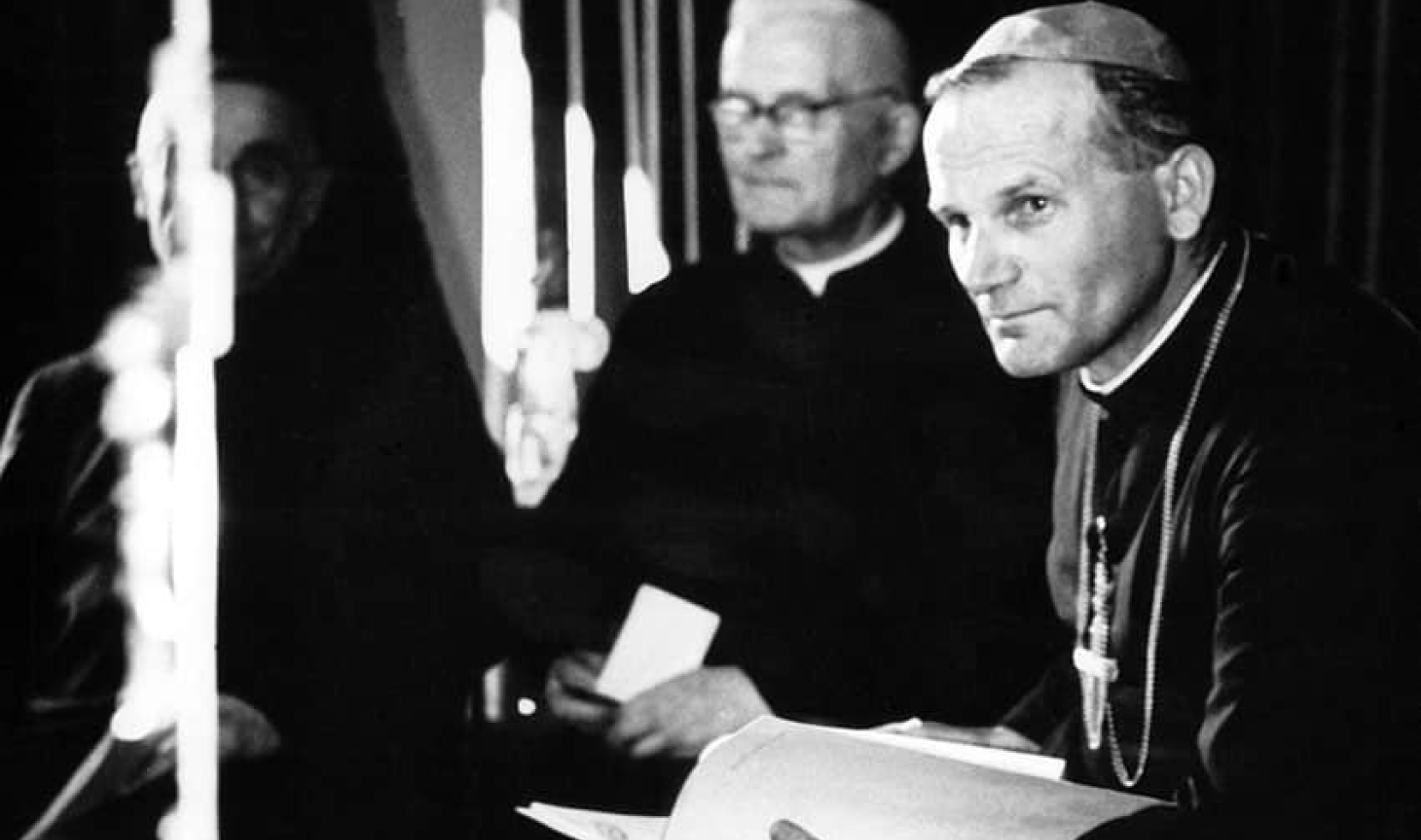
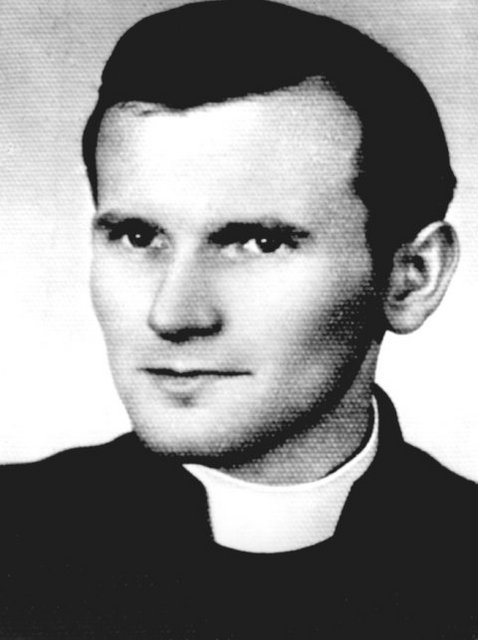

"IMMENSE IS THE GRANDEUR
AND DIGNITY OF THE PRIEST!”
After finishing his studies at the seminary in Kraków, Wojtyła was ordained as a priest on All Saints' Day, 1 November 1946. He resided in the Belgian Pontifical College during this time, under rectorship of Maximilien de Furstenberg. Wojtyła earned a licence in July 1947, passed his doctoral exam on
14 June 1948, and successfully defended his doctoral thesis titled The Doctrine of Faith in St. John of the Cross in philosophy. Wojtyła visited Padre Pio, who heard his confession and told him that one day he would ascend to "the highest post in the Church.”

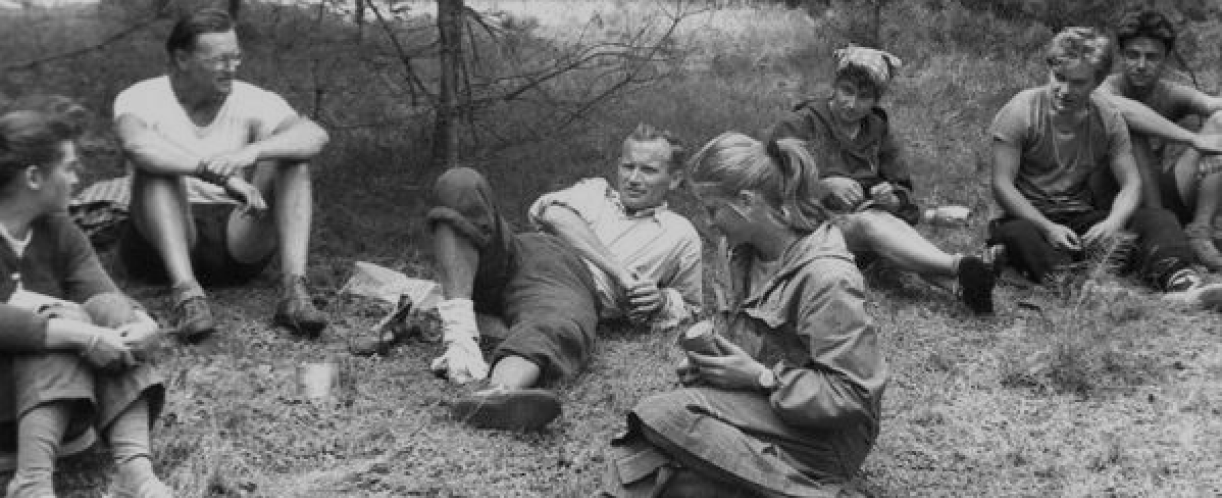
In March 1949, Wojtyła was transferred to the parish of Saint Florian in Kraków. He taught ethics at Jagiellonian University and subsequently at the Catholic University of Lublin. While teaching, he gathered a group of about 20 young people, who began to call themselves Rodzinka, the "little family". They met for prayer, philosophical discussion, and to help the blind and the sick. The group eventually grew to approximately 200 participants, and their activities expanded to include annual skiing and kayaking trips. He focused on creating original literary work during his first dozen years as a priest. War, life under
Communism, and his pastoral responsibilities all fed his poetry and plays. While a priest in Kraków, groups of students regularly joined Wojtyła for hiking, skiing, bicycling, camping and kayaking, accompanied by prayer, outdoor Masses and theological discussions. In Stalinist-era Poland, it was not permitted for priests to travel with groups of students. Wojtyła asked his younger companions to call him "Wujek" (Polish for "Uncle") to prevent outsiders from deducing he was a priest.
PAPACY
Wojtyła became the 264th pope according to the chronological list of popes, the first non-Italian in 455 years. At only 58 years of age, he was the youngest pope since Pope Pius IX in 1846, who was 54. During his pontificate, John Paul II made journeys to 129 countries, travelling more than 1,100,000 kilometres (680,000 mi) while doing so. He consistently attracted large crowds, some among the largest ever assembled in human history, such as the Manila World Youth Day, which gathered up to four million people, the largest papal gathering ever, according to the Vatican
In June 1979, John Paul II travelled to Poland, where ecstatic crowds constantly surrounded him. This first papal trip to Poland uplifted the nation's spirit and sparked the formation of the Solidarity movement in 1980, which later brought freedom and human rights to his troubled homeland On later trips to Poland, he gave tacit support to the Solidarity organization. These visits reinforced this message and contributed to the collapse of East European Communism that took place between 1989 and 1990 with the reintroduction of democracy in Poland, and which then spread through Eastern Europe and South-Eastern Europe.

As an extension of his successful work with youth as a young priest, John Paul II pioneered the international World Youth Days. John Paul II presided over nine of them: Rome, Buenos Aires, Santiago de Compostela, Częstochowa, Denver, Manila, Paris, and Toronto.
Total attendance at these signature events of the pontificate was in the tens of millions.
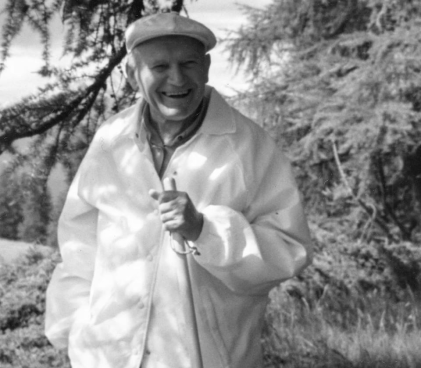
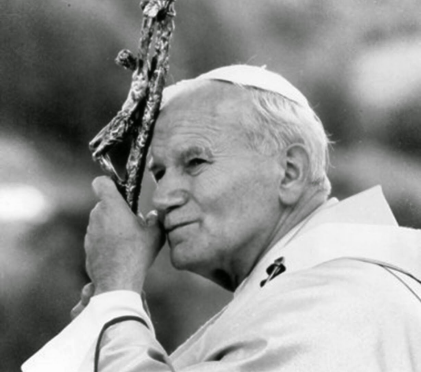
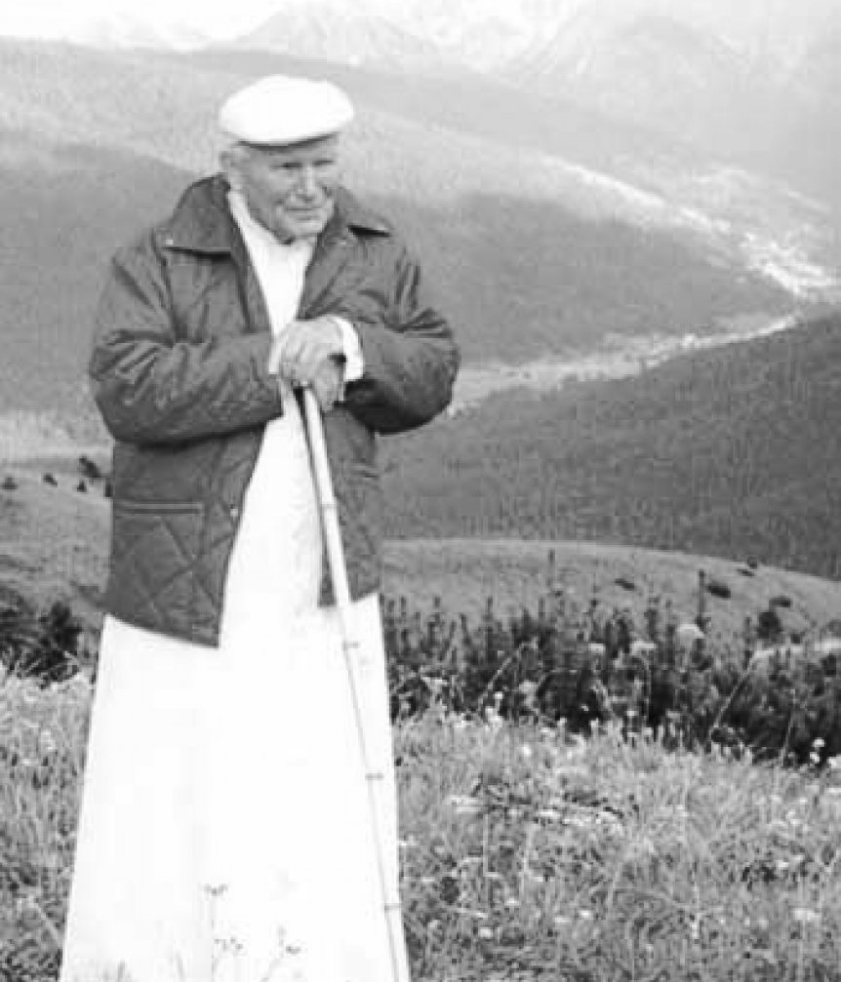
TEACHINGS
As pope, John Paul II wrote 14 papal encyclicals and taught about sexuality in what is referred as the "Theology of the Body". He was considered a conservative on doctrine and issues relating to human sexual reproduction and the ordination of women. While he was visiting the United States in 1977, the year before becoming pope, Wojtyła said: "All human life, from the moments of conception and
through all subsequent stages, is sacred." A series of 129 lectures given by John Paul II during his Wednesday audiences in Rome between September 1979 and November 1984 were later compiled and published as a single work titled Theology of the Body, an extended meditation on human sexuality. He extended it to the condemnation of
abortion, euthanasia and virtually all capital punishment, calling them all a part of a struggle between a "culture of life" and a "culture of death". John Paul II was an outspoken opponent of the death penalty, although previous popes had accepted the practice.
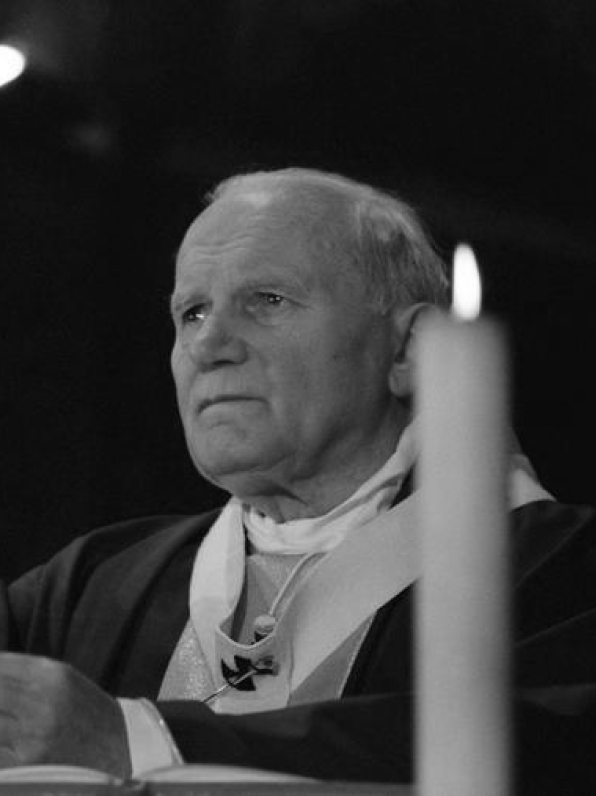
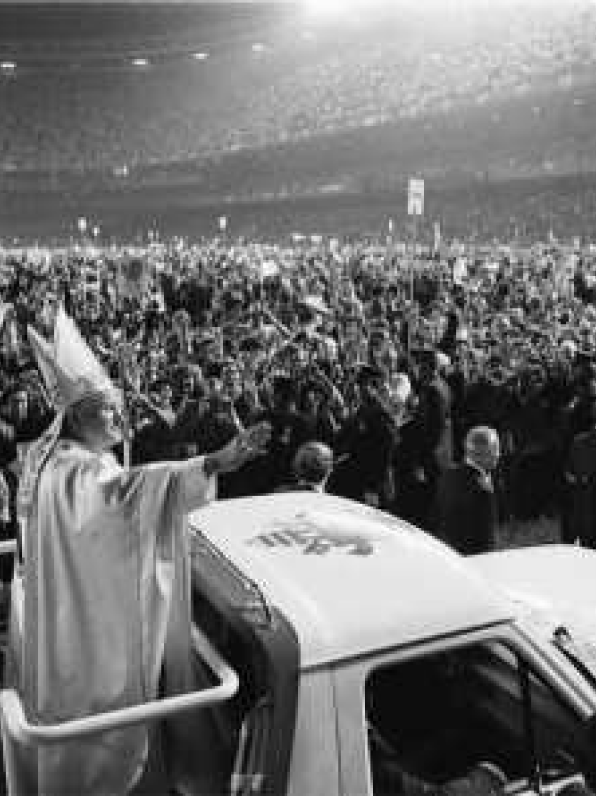
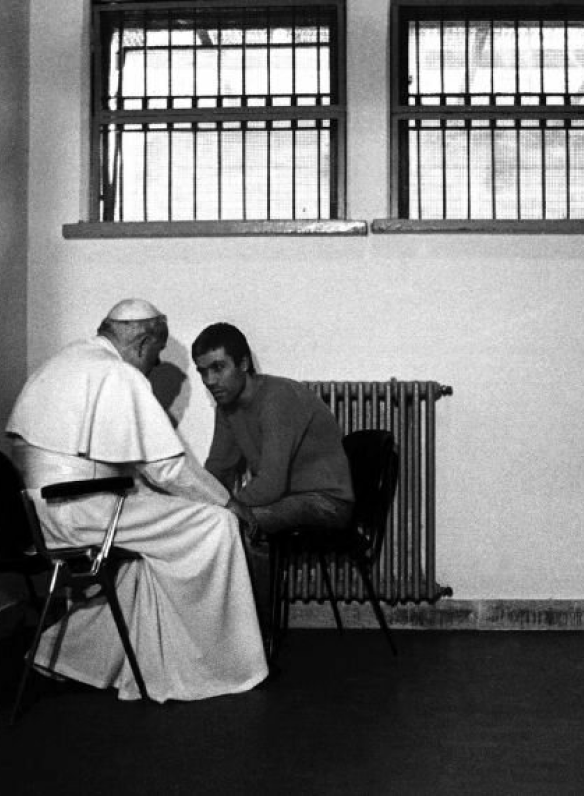
"AS THE FAMILY GOES, SO GOES THE NATION.”
DEATH
When he became pope in 1978 at the age of 58, John Paul II was an avid sportsman. He was extremely healthy and active, jogging in the Vatican gardens, weight training, swimming, and hiking in the mountains. However, after over twenty-six years as pope, two assassination attempts, one of which injured him severely, and a number of cancer scares, John Paul's physical health declined. In 2001 he was diagnosed as suffering from Parkinson's disease. International observers had suspected this for some time, but it was only publicly acknowledged by the Vatican in 2003. Despite difficulty speaking more than a few sentences at a time, trouble
hearing, and severe osteoarthrosis, he continued to tour the world although rarely walking in public. On 31 March 2005, following a urinary tract infection, he developed septic shock, a form of infection with a high fever and low blood pressure, but was not hospitalised. Instead, he was monitored by a team of consultants at his private residence. This was taken as an indication by the pope, and those close to him, that he was nearing death; it would have been in accordance with his wishes to die in the Vatican. Later that day, Vatican sources announced that
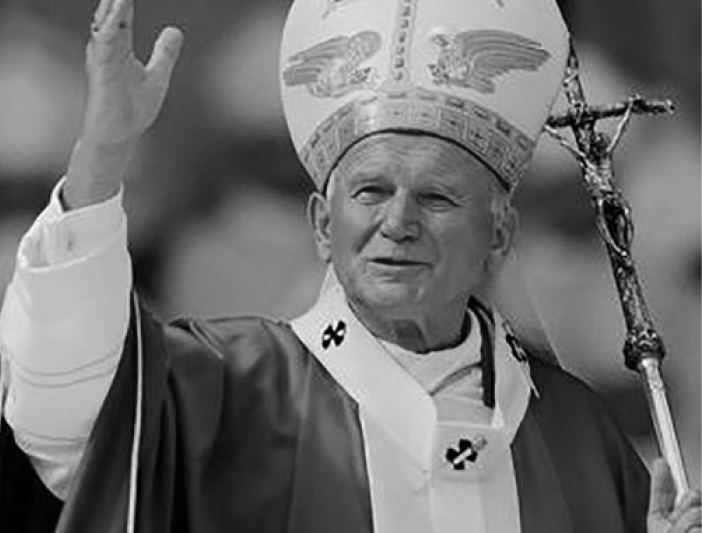
John Paul II had been given the Anointing of the Sick by his friend and secretary Stanisław Dziwisz. Tens of thousands of people assembled and held vigil in St. Peter's Square and the surrounding streets for two days. On Saturday, 2 April 2005, at approximately 15:30, John Paul II spoke his final words in Polish, "Allow me to depart to the house of the Father," to his aides, and fell into a coma about four hours later. John Paul II died in his private apartment at 21:37 of heart failure from profound hypotension and complete circulatory collapse from septic shock, 46 days before his 85th birthday.
Karol Józef Wojtyła was born on May 18, 1920, in Wadowice, Poland, the youngest of three children. Although he was born into a loving family, his early life was marked by suffering and loss. His older sister, Olga, died in infancy and, by the time Karol was twelve, his mother Emelia had died of kidney failure and his Benedict XVI began the beatification process for his predecessor, bypassing the normal restriction that five years must pass after a person's death before beginning the beatification process.
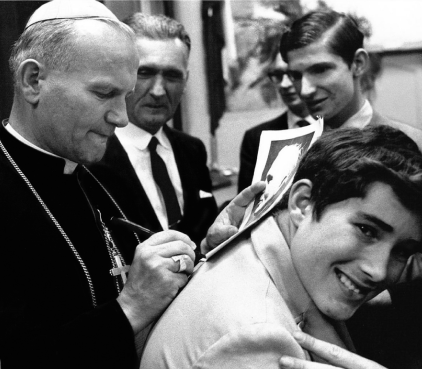
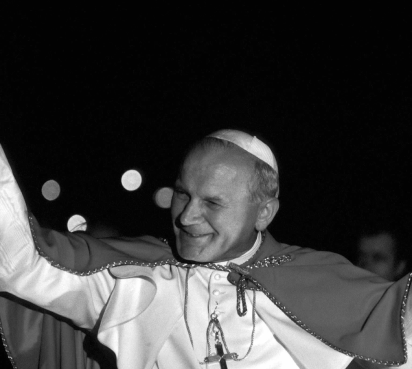
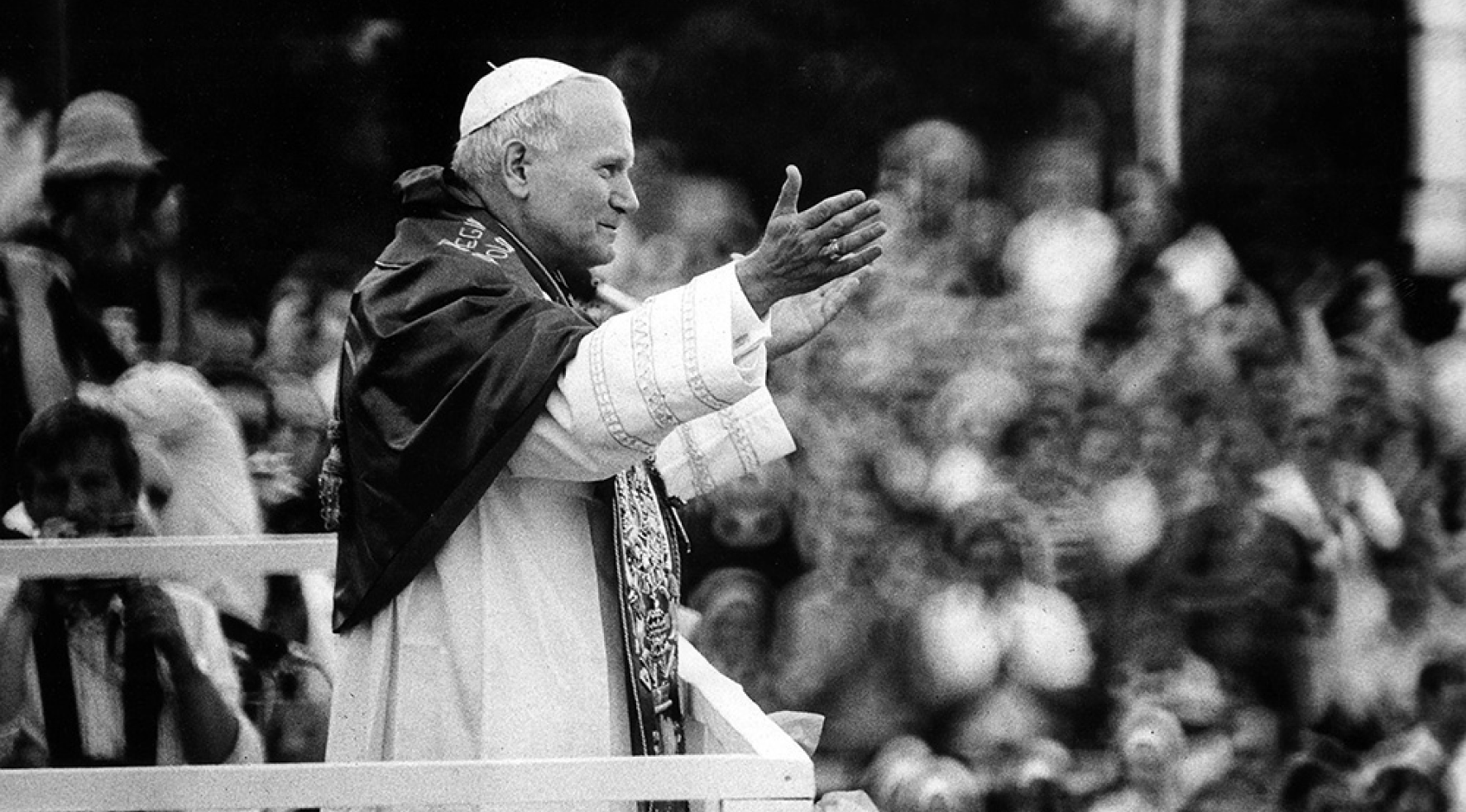
LEGACY
To be eligible for canonisation (being declared a saint) by the Catholic Church, two miracles must be attributed to a candidate. The first miracle attributed to John Paul was the healing of a man's Parkinson's disease, which was recognized during the beatification process. According to an article on the Catholic News Service dated 23 April 2013, a Vatican commission of doctors concluded that a healing had no natural explanation, which is the first requirement for a claimed miracle to be officially documented. The second miracle was deemed to have taken place shortly after the late pope's beatification on 1
May 2011; it was reported to be the healing of Costa Rican woman Floribeth Mora of an otherwise terminal brain aneurysm. On 4 July 2013, Pope Francis confirmed his approval of John Paul II's canonisation, formally recognising the second miracle attributed to his intercession. He was canonised together with John XXIII. The date of the canonisation was on 27 April 2014, Divine Mercy Sunday.

Pre-JPII, the Pope was regarded as CEO of Roman Catholic Church, Inc., spending most of his time in Rome with very little relevance to non-Catholics. Pope John Paul II changed all that. Here's how one author, David Gibson, described JPII's papacy: “He broke out of the golden cage of the Vatican and its protocols and took the papacy to the world rather than expecting the world to follow the road to Rome.“